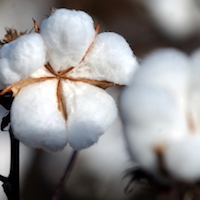The rapid spread of COVID-19 has severely impacted the global cotton supply chain. An unexpected reduction in cotton mill use data is observed across all of the major cotton spinning countries, including China, India, Pakistan, Bangladesh, Turkey and Vietnam.
Cotton spinning in China fell by upwards of 90% during the height of the pandemic in that country in early March. The spinning industry in China has begun to recover now but, with the anticipation of a decline in consumer consumption of apparel, the recovery of the spinning industry is limited for the current marketing year.
COVID-19 is spreading fast in Turkey, India and Pakistan. Like China, recent travel restrictions in India, Pakistan and Vietnam are likely to have similar impacts on their spinning industry.
World retail sales of clothing and textiles have also plummeted. Many “non-essential” businesses, including apparel stores, are closed to slow down the spread of the virus. In addition, with the rising rate of global unemployment, consumers' use of dispensable income on apparel is also likely to be limited.
The forecast for the current year’s world cotton consumption dropped 6.4% (7.6 million bales) in April 2020 compared to March 2020. The current forecast of world cotton demand is at 111 million bales, while the world cotton supply is at a relatively high level of 122 million bales.
Global ending stocks are also projected to increase at the third-highest level for the past decade at 91 million bales. With supply outpacing demand and rising global ending stocks, we have seen downward pressure on global cotton prices.
U.S. cotton acreage is projected to be nearly unchanged at approximately 13.7 million acres in 2020 after a decline in 2019, according to the U.S. Department of Agriculture’s Prospective Plantings Report. However, the survey was conducted in early March and may not have captured the full effects of the decline in cotton prices since then.
U.S. cotton exports are currently forecasted at 15 million bales, down 1.5 million bales from the April forecast. Since the China-U.S. trade dispute, the U.S. lost part of its cotton market share in China. Brazil and Australia have benefited from the loss of market opportunity for U.S. cotton in China.
In the global export market, Brazil is becoming the largest competitor for U.S. cotton. U.S. ending stocks for the 2019-20 crop year are expected to increase to the highest ending stocks for the past decade at 6.7 million bales.
The decline of global cotton demand, trade uncertainty, increased levels of global competition and economic recession due to the COVID-19 crisis all factor into continued downward pressure for U.S. cotton prices. July cotton futures for old crops closed at 55.84 cents per pound, and new crop December futures closed at 57.52 cents per pound on May 1.
For more cotton news from University of Georgia Cooperative Extension, go to ugacotton.com.







